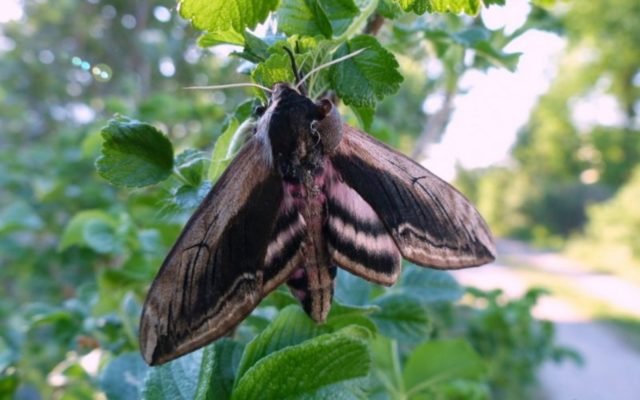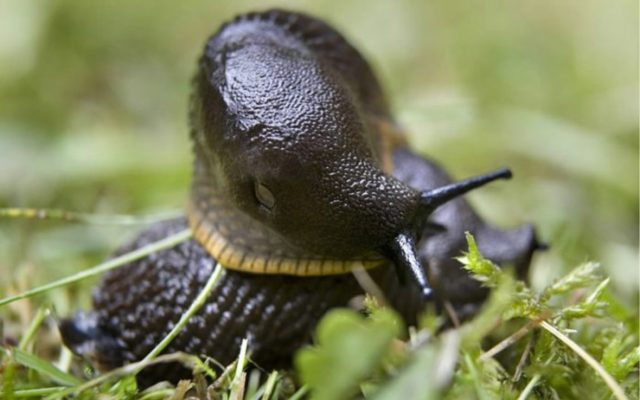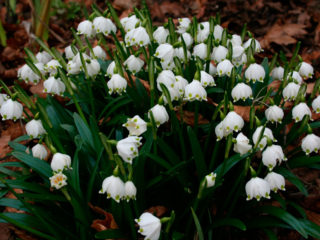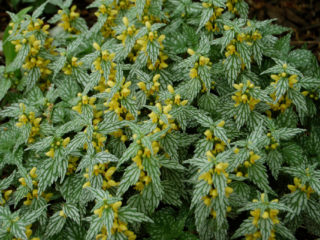Content
Spring whiteflower is an early flowering bulbous plant that is a member of the Amaryllis family. It is often confused with snowdrop, but these are completely different crops. This perennial is found in the forest, but if desired, it can be grown in your own garden plot. And then every spring it will delight with its snow-white flowers, when many plants are just waking up after hibernation. Sometimes the spring white flower is also called white violet.
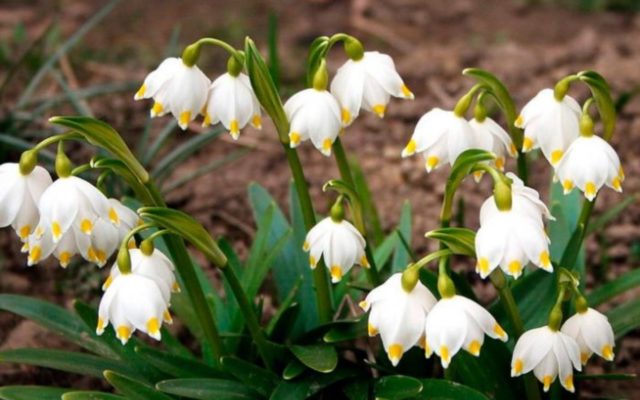
Whiteflower flowers exude a pleasant delicate aroma
Description of spring whiteflower
This perennial reaches a height of 20 cm under favorable conditions. Spring whiteflower (Leucojum vernum) is distinguished by broad-line leaves with a shiny surface. Their length reaches 25 cm and width no more than 3 cm.
The leaves of the spring whiteflower begin to grow simultaneously with the peduncle, and end after it withers. Every year, the plant forms 2-3 lower scales, between which leaf plates are laid for the next year. Some of them have a closed base and only one is open, since it is from this that the peduncle subsequently grows.Also at the base of this plate is a renewal bud.
Every year in the spring, active vegetation of the plant begins, and by mid-summer its above-ground part completely dries out, which means the transition to the dormant stage.
The underground part of the perennial is presented in the form of a bulb up to 3.5 cm long and about 2.5 cm in diameter. It consists of membranous white scales of a closed type. During the process of growth and flowering, additional roots grow at the bottom of the bulb, which subsequently die.
The bell-shaped, drooping flowers of the spring crocus bloom on bare peduncles that grow up to 25 cm in height. They can be single or collected in small umbrella inflorescences of 2-3 pieces. The buds of spring whiteflower are simple; they consist of 6 equal petals, which are located at the same level. When fully opened, you can see a greenish pistil and 5-6 stamens with yellowish anthers in the center.
The flowering period of spring whiteflower begins in April and lasts 20-30 days. At the end of it, the perennial forms fruits in the form of a fleshy round box. Inside it are black oblong seeds.
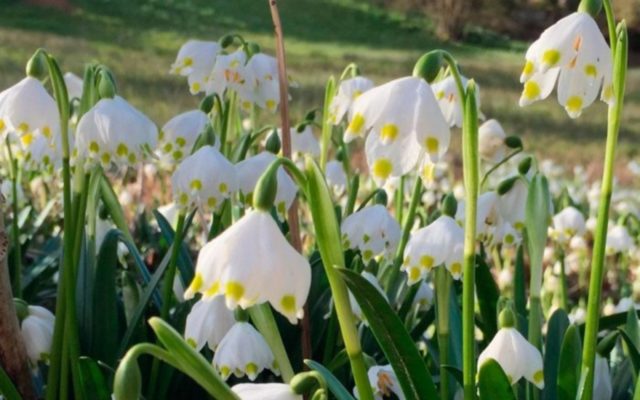
At the end of each petal, the spring whiteflower has a yellow or green spot
The plant is highly frost-resistant. Easily tolerates temperatures down to -30 degrees in the presence of snow cover.
Spring whiteflower prefers shaded areas, so it can be planted under the shade of shrubs and trees, as well as in areas where moisture stagnates in the spring.The composition of the soil for this plant is not important, the main thing is that the acidity level is not high.
Where does it grow
Under natural conditions, spring whiteflower can be found on the edges of beech, oak and ash forests. The perennial also grows along streams, in lowlands and ravines, where the soil always remains moist.
Spring whiteflower is common in:
- Turkey;
- Iran;
- North Africa;
- Central Europe.
It is also found in Ukraine, namely in the Carpathians and Transcarpathia, where it is listed in the Red Book.
Difference between whiteflower and snowdrop
These bulbous perennials are close relatives, but have significant differences. They can only be confused at a distance.
The spring whiteflower flower consists of 6 equal petals of the same size. Moreover, at the end of each there is a peculiar yellow or green mark, which is a characteristic difference.
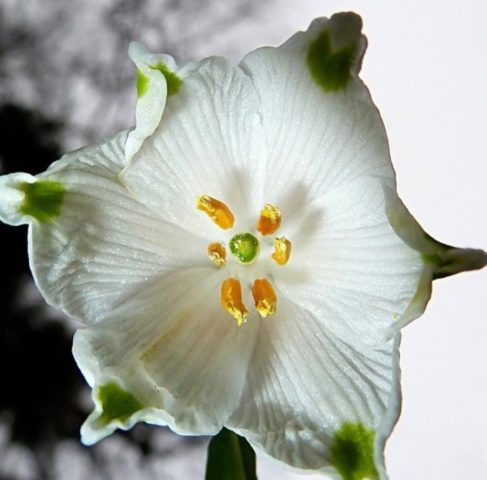
Spring whiteflower blooms much later
Snowdrop or galanthus flowers also consist of 6 petals, but they differ in size and are at different levels. Three of them are external, which are elongated oval and significantly larger in size. And the rest is formed by the inner corolla in the form of a crown. They are smaller and have spots.
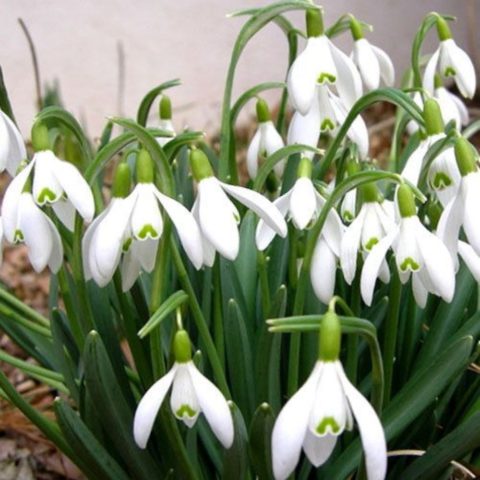
Snowdrop flowers have no scent, unlike spring whiteflowers.
Reproduction methods
To get new spring whiteflower seedlings, you can use daughter bulbs that grow near the mother bulb or seeds. The first method of reproduction is simple. To do this, you need to dig up the spring crocus in July-August, when the plant is in the dormant stage.Then carefully divide the nests and dry the babies. After this, plant it in a permanent place.
The seed propagation method is more labor-intensive and requires patience. But it allows you to obtain a large amount of planting material. To do this, it is necessary to collect the seeds of the white flower leucouma and immediately plant them in the ground, as they remain viable for a short time. In winter, they will undergo natural stratification, which is necessary for future seedlings. Further care consists of timely weeding and watering.
Planting and caring for spring whiteflower
Bulbs can be planted in open ground from late July to mid-September. When purchasing planting material, you need to pay attention to their appearance. The bulbs should be dense, heavy, without mechanical damage.
Planting and further caring for the spring whiteflower (photo below) does not require complex actions, so the plant will not cause much trouble for the gardener.
For this perennial you need to choose a shaded place under trees or shrubs. In this case, the soil must be nutritious with good moisture and air permeability. Therefore, 10 days before planting, you need to dig up the area and add humus, peat and sand to the soil, 5 liters per 1 square meter. m.
Spring whiteflower should be planted in groups at a distance of 10 cm from each other. The planting depth should be equal to the height of the bulb, multiplied by 2. After this, sprinkle with soil and water generously.
Caring for spring whiteflowers involves regularly loosening the soil and removing weeds so that they do not take away nutrients. It is also necessary to water during periods of drought before the plant enters the dormant stage.
Spring whiteflower needs to be fertilized once a year during the growing season. To do this, use nitroamophoska at the rate of 30 g per 10 liters of water and sprinkle wood ash nearby.
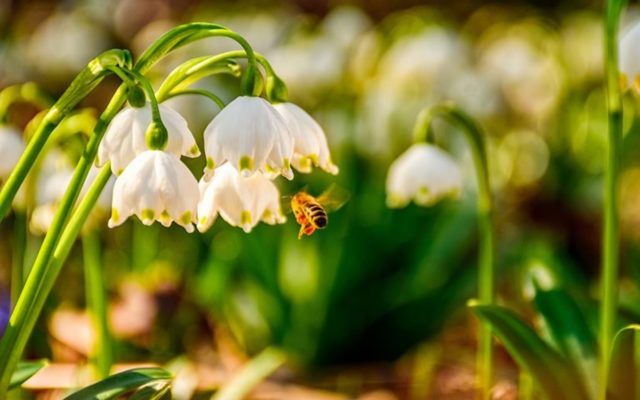
For winter, perennial plantings should be sprinkled with fallen leaves.
Pests and diseases
Spring whiteflower, like all bulbous crops, is susceptible to attack by pests. Therefore, it is necessary to periodically inspect the plant for signs of occurrence in order to take urgent measures.
Possible problems:
- Owl butterfly. Damage to the plant is caused by the voracious larvae of this pest. They feed on peduncles and leaves of spring whiteflower and can cause death. To destroy, you should use Actellik.
- Slugs. The pest is nocturnal, which makes it difficult to control. It feeds on the leaves of the plant, which significantly reduces its decorative value. To scare away, you need to sprinkle spring whiteflower plantings with wood ash and tobacco dust.
- Root nematode. A transparent worm up to 1 cm long. Penetrates the bulb and eats away the passages in it. Damaged areas rot over time. To treat, you need to pick out the diseased plant and place the bulbs in a solution of the Confidor Extra insecticide for 30 minutes.
Spring whiteflower is sometimes susceptible to viral diseases, which can be identified by red stripes on the leaves, which subsequently lighten and merge.Treatment in this case is useless, so you need to dig up the plant and burn it before the disease spreads to neighboring crops.
What plants can and cannot be planted with?
Spring whiteflower must be planted with crops in which the root system deepens or does not grow much in diameter. This will allow them not to compete for food and moisture.
The best neighbors for this perennial can be scillas, muscari, marsh iris, and tulips. Daffodils, crocuses, primroses and hyacinths grow well nearby.
The flowering of these plants can successfully complement each other and make the spring flower bed bright and elegant.
Conclusion
Spring whiteflower is an elegant plant that can bring joy every year after winter. At the same time, it does not require complex care, which contributes to the growth of its popularity among beginners and experienced gardeners. To plant it on your plot, you don’t need to go into the forest, since any store can offer a wide assortment of spring whiteflower bulbs, which are specially grown for these purposes.
